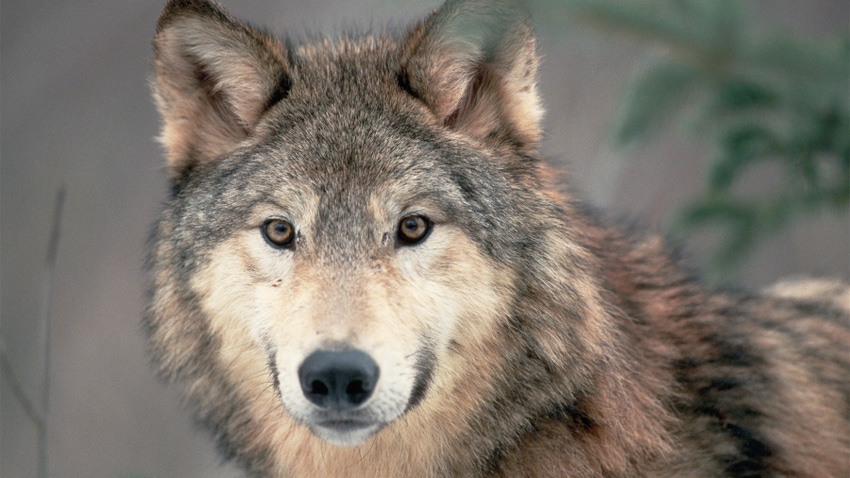March 21, 2024

by Olivia Sip
A top priority for the Minnesota State Cattlemen’s Association is advocating for the delisting of the gray wolf.
Kaitlyn Root, executive director of the MSCA, says, “There are over 2,900 wolves in the state of Minnesota, and we have producers that struggle losing calves to wolves, which is a really big deal.”
Miles Kuschel, a rancher and Minnesota Farm Bureau board director from Sebeka, Minn., explains that there have been wolves on his family’s ranch for over 20 years causing frustration among the ranching community because they are federally protected.
“Ranchers don’t have the ability to protect their own livestock, and that is when it is really challenging,” says Kuschel.
The state had control of wolf management in 2012-14, which left ranchers with a positive attitude because they had the ability to protect their livestock.
“Whether they are listed or not listed, delisted or relisted, [it] is really challenging for not only livestock producers but for law enforcement because they have to keep up with whether they are on or off, or if they have to call a state or federal trapper. … This has added a lot of confusion,” Kuschel explains.
When a beef producer has a calf killed, they can report the death as a wolf kill and can get indemnity funds from the Minnesota Department of Agriculture. It can be difficult to identify a wolf kill because there isn’t always enough left to find; however, if there is a verifiable wolf kill, officials will have the federal trappers come in, explains Root.
“The gray wolf was put on the endangered species list for a reason; however, we feel having this many wolves in the state of Minnesota [is] a reason to delist the gray wolf and properly manage it,” says Root.
Kuschel explains, “The frustrating thing for anybody that is in the conservation field — whether you are a livestock producer, [member of the Department of Natural Resources] or wildlife connoisseur in the Great Lakes area — is that the gray wolf should be the poster child for the success story of the Endangered Species Act. … A species that was on the brink of extinction, to literally bring them back to three times the population of their stated goal is a success story in itself.”
However, keeping them on the list is management because the No. 1 killer of wolves is other wolves since they are very territorial, explains Kuschel.
Minnesota leads the pack
“Several wolf issues get categorized as coyote issues depending on the lack of knowledge and/or evidence from the agency officials doing the reporting,” says Kuschel.
As the wolf territory continues to expand into central and western Minnesota, people are just not familiar with the wolf situation, explains Kuschel.
Minnesota and Wisconsin have a lot of wolf packs compared with other states, as Minnesota has the most wolves out of all the lower 48.
“We are kind of incomparable to other states that have wolves just because we have so many because we have a good habitat for the wolves to survive on,” explains Root.
In January 2021, wolves were removed from the endangered species list, and management was returned to the states. In February 2022, wolves were declared a federally protected, threatened species in the contiguous 48 states and Mexico.
Currently, there are no updated rule changes in Minnesota for the delisting of the gray wolf; however, the MSCA is continuing to have discussions with state representatives.
The MSCA will be in Washington, D.C., this April to have discussions on key issues for Minnesota beef producers.
Root stresses that the delisting of the gray wolf will be a top discussion.
“Congressman Pete Stauber and Congresswoman Michelle Fischbach have been advocates for this issue,” says Root.
Also, the Minnesota Farm Bureau Federation has been heavily involved in the delisting of the gray wolf since it regained population and producers started having livestock losses, Kuschel says.
“Back in the ’90s, we had one of our former board members, who served on the first wolf plan task force in 1998, then rolled out two years later with the wolf plan,” says Kuschel. “This plan was a very comprehensive management plan that served both the livestock producers and the Minnesota DNR extremely well when it had the opportunity to be enacted in 2012, 2013 and 2014.”
As the plan was being evaluated, the governor felt the need to update it, so Kuschel had the opportunity to be part of the wolf management plan update for the past three years.
“We have been heavily involved both on scene and behind the scenes, lobbying for members’ voices and concerns to our elected officials on what damage wolves can do,” says Kuschel. “The mantra that wolves only go after the sick and the weak is absolutely false; I’ve seen firsthand where they have sport-killed 23 sheep, which was shocking to see.”
When Kuschel served on the wolf management update, there was a concern that some people wanted to wipe out all the wolves.
Kuschel explains, “I don’t have an issue with wolves, but livestock producers have an issue when they attack livestock.”
Root strongly encourages every producer who has a calf kill or injury by a wolf to contact the DNR.
“It is important to report a kill or injury because it is then documented, letting us know how many calls we are getting per year,” explains Root. “Continue to reach out to your representatives, advocating for this cause.”
Sip writes from Ada, Minn.
You May Also Like




